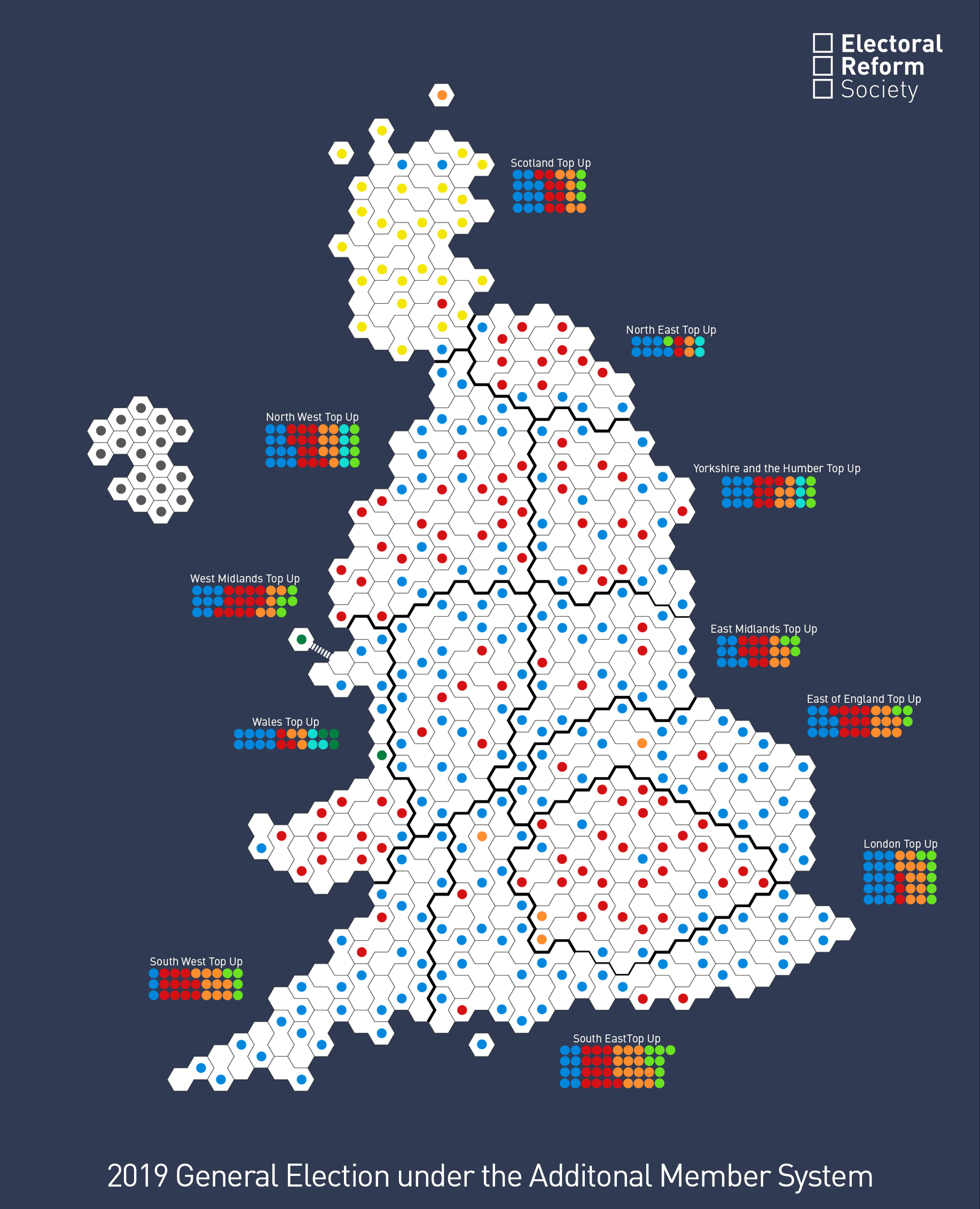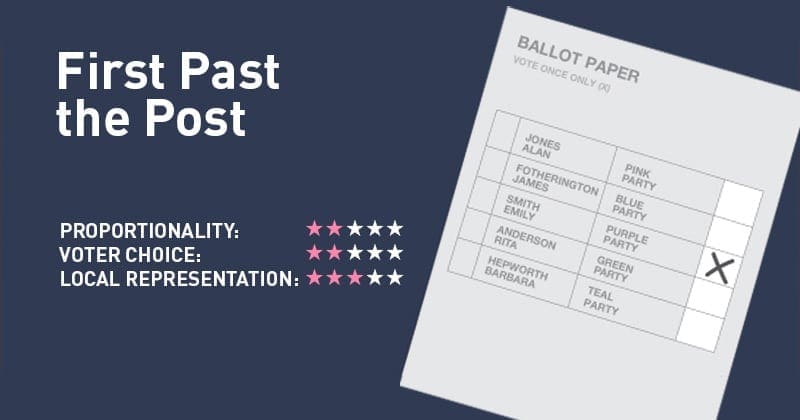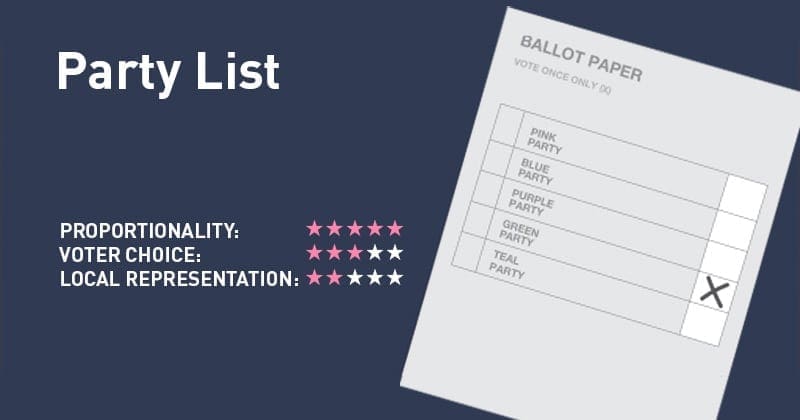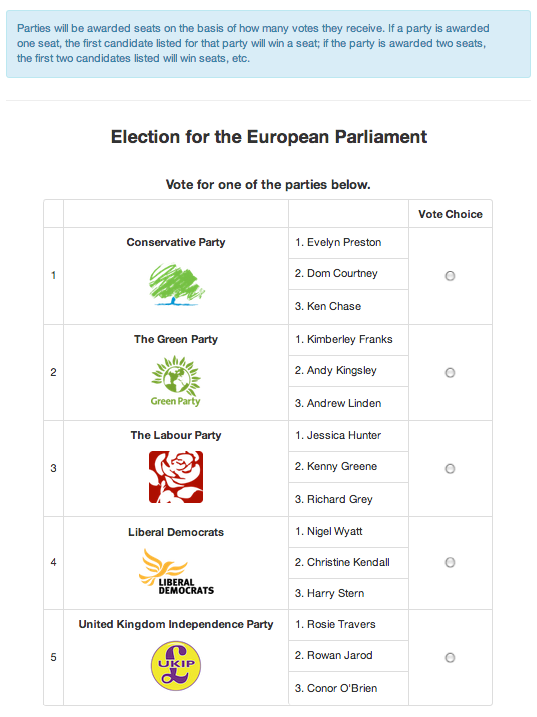The proportional representation closed party list system is used to elect members of the European Parliament. Based on the quota discussed previously when a party receives a quota of votes the party wins a placement of representation on the council or legislature.
Party List Proportional Representation - If you're looking for picture and video information linked to the key word you have come to pay a visit to the right blog. Our website gives you suggestions for seeing the highest quality video and picture content, hunt and find more informative video articles and graphics that fit your interests. comprises one of tens of thousands of video collections from several sources, especially Youtube, so we recommend this movie that you view. This site is for them to visit this site.
The 2019 General Election Voters Left Voiceless Electoral Reform Society Ers
Ramaphosa a breath of fresh air but South Africans cant relax.

Party list proportional representation. Most nations with proportional representation use some form of party-list voting. Proportional representation sometimes called simply PR is defined as an electoral system in which parties gain seats in proportion to the number of votes cast for them This is different than a direct system of representation where each seat is put up to a vote for a specific candidate regardless of what party to which they associate. The basic idea behind the party list vote is that each voter supports a list of candidates representing their favorite political party.
In both cases parties present lists of candidates and seats are awarded according to their partys share of the vote. Party-list proportional representation PLPR systems are a family of Partisan system used in multiple-winner elections eg. The form can be multi-member seats or party lists.
The three major variants of party list proportional representation systems vary to the degree that they allow voters to cast votes for candidates and for political parties. Proportional representation Electorate are reflected proportionately in the elected body. This method dictates that voters vote for parties instead of individual candidates.
Closed List Open List and Free List Party list systems are the most common methods of proportional representation used around the world. Over 80 of the PR systems used worldwide are some form of party list voting. If n of the electorate support a particular political party as their favorite then.
With 49 of the vote party A receives about 49. Proportional representation is an electoral system in which the number of seats held by a particular political party in a legislature is directly determined by the number of votes the political partys candidates receive in a given election. There are two different types of Party List PR Closed List and Open List.
The party-list proportional representation system means that South Africans elect representatives who dont have any real link to their needs and interests in the areas in which they live and work. Elections to parliament emphasizing proportional representationIn these systems parties make lists of candidates to be elected and seats get allocated to each party in proportion to the number of votes the party receives. A The party-list system is a mechanism of proportional representation in the election of representatives to the House of Representatives from national regional and sectoral parties or organizations or coalitions thereof registered with the Commission on Elections COMELEC.
Component parties or organizations. Pro Rep provides a close correlation between the percentage of votes received for a particular group of candidates represented by their party and the percentage of seats that party then receives in government. A voter marks a cross on the ballot paper next to.
Meaning of Proportional Representation 11 Proportional representation PR is a generic term for all the systems of election which seek to relate seats to votes cast by the electorate in accordance with party or candidate preference. How does Party List Proportional Representation PR work. It remains the system used in most European democracies and in many newly democratized countries including South Africa.
Party list voting systems are by far the most common form of proportional representation. Party-list proportional representation systems are a family of voting systems emphasizing proportional representation PR in elections in which multiple candidates are elected eg elections to parliament through allocations to an electoral list. For example in a five-winner district with proportional representation if party A received 40 percent of the vote and party B received 60 percent of the.
Each political party is awarded seats in the legislature in. The majority of proportional representation voting systems use the party list voting method. Party-list proportional representationsingle transferable vote formula and list systemswhich predominate in elections in western Europe and Latin Americais that in the latter.
Party List Proportional Representation In Party List systems seats in parliament closely match how many votes each party receives but there is often a weaker constituency link. Proportional Representation Electoral Systems 1.
Ace
Electoral Systems And Electoral Reform In Canada And Elsewhere An Overview
Electoral Reform Five Different Voting Systems At A Glance Ottawa Citizen
List Proportional Representation
Explainer Everything You Wanted To Know About Electoral Reform The Globe And Mail
First Past The Post Electoral Reform Society Ers
Party List Proportional Representation Electoral Reform Society Ers
Liberal Thoughts Nick Boles Deselection And Proportional Representation
If The European Parliament Voting System Were Changed To An Open List System Many Voters Would Switch Their Support From Ukip To The Conservative Party British Politics And Policy At Lse








